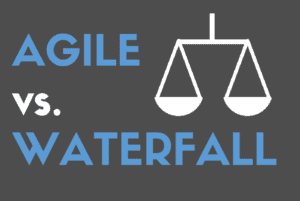Tag Archives: Agile
Agile Training: Fundamentals
Five Ways to Foster Project Management Innovation

Project teams have a lot to deal with on projects. They will have to navigate multiple problems, such as risks becoming issues, costs exceeding budget, and schedules slipping, on any given project. The top notch project managers and teams are skilled and experienced at coming up with innovative solutions to these problems. How can any project manager or team acquire this skill? In this post, we describe five ways to improve creativity on project teams to foster project management innovation. These steps range from building the foundation through organizational structure and culture to trying out agile practices.
5 Things Needed to Be Agile Ready

Turning Project Management Into a Competitive Advantage

According to PMI’s 2016 Pulse of the Profession report, organizations lose $122 million on average for every $1 billion spent on projects, an increase from the last measure in 2014.
Although the waste could be worse, organizations should examine ways to further reduce that waste. PMI’s (2014) recommendations for minimizing these losses include greater coupling of projects with organizational strategy and a greater organizational agility that includes more emphasis on customers and processes. In this blog post, we will provide commentary on both the 2014 and 2016 reports and offer additional solutions from the perspective of our project management experience.
Agile Vs. Waterfall

How do Agile methods differ from waterfall methods? In this blog post, we will answer that question and we will present the key differences between Agile and waterfall. As the traditional method used to deliver projects, waterfall tends to be the more common and generic way of managing projects. Agile is typically used with software projects, but can also apply to other projects. Depending on the type of project, Agile may or may not be a good fit for non-software projects. With other types of projects, you might even be able to integrate Agile and waterfall methodologies together to create a dynamic way of approaching a specific project.
Q&A with NK: Beginnings in Agile

This is the second post in a Q&A series with RefineM’s CEO and founder, NK Shrivastava. In this post, we’ve asked NK to share his experiences with Agile, and why he believes Agile is an important aspect of project management. If you’re interested in reading the first interview in this series, take a look at Q&A with NK: Beginnings in Project Management. We hope that you will be able to learn more about NK and how his career has helped shape him into an excellent Agile Coach and the CEO of his own company.
Roadmap to Implement Agile

Are you ready to have a team that is actively involved, quick to make decisions and quick to embrace change? If so, you’re ready to implement Agile. With Agile, you’ll speed up delivery, have higher customer satisfaction, greater project success, and will be better equipped to reduce risk. Follow us on the road to implement Agile.
Agile Contracts

An agile project is likely to look drastically different as compared to a waterfall project. As a result, the contract for an agile project needs to be constructed with mutual understanding of these differences between customers and organizations practicing agile. Acknowledging the unique project environment in the agile contract will allow both sides to better support their agile projects. In this post, we describe key features agile contracts need to have and describe a few examples of contracts.
Integrating Agile and Waterfall

Focusing the Daily Scrum

